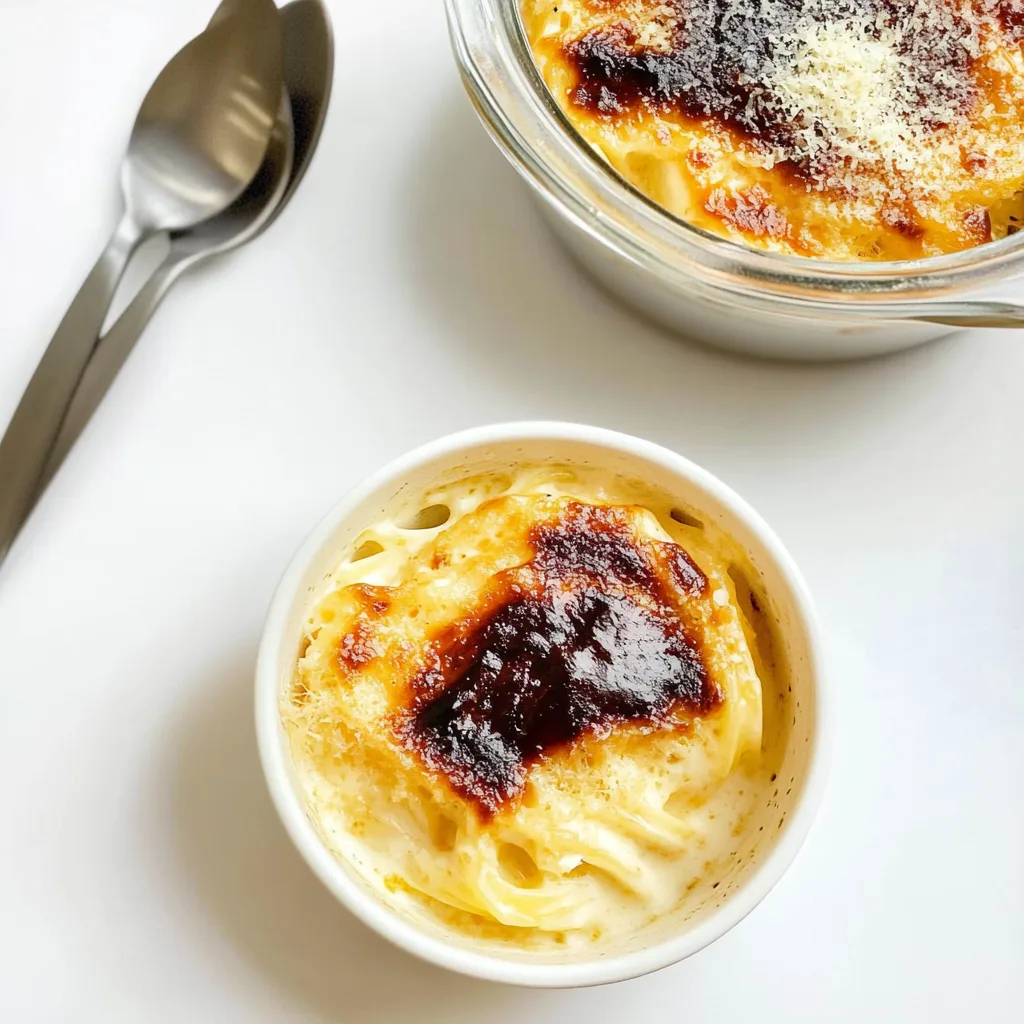This is a dessert synonymous with luxury, elegance, and timeless appeal. With its smooth, velvety custard base and crisp, caramelized sugar topping, it has become a symbol of fine dining and culinary craftsmanship. But beyond its undeniable charm lies a question that has tantalized food historians and dessert enthusiasts alike: Is Italian or French?

At first glance, the name “crème brûlée,” which translates to “burnt cream,” seems to place its roots firmly in French cuisine. After all, France is celebrated for its rich culinary heritage and its refined approach to custard-based desserts. However, dig a little deeper, and you’ll discover competing claims from Italy and even England, each with their own variations on this iconic treat.
Italy, for instance, boasts crema catalana, a caramelized custard dessert dating back to the 17th century. Meanwhile, England’s burnt cream, or Trinity cream, has its own storied history. These parallels highlight the fascinating culinary exchange that took place across Europe during the Renaissance and beyond, influencing techniques and recipes that remain beloved to this day.
Understanding the origins : means looking at more than just its name—it’s about exploring the evolution of custard-based desserts and the cultural connections that shaped their development. Whether it’s the French refinement, the Italian zest, or the English practicality, crème brûlée embodies the shared culinary heritage of Europe.
For those intrigued by the interplay of flavors and techniques across cultures, this exploration of crème brûlée’s history will not only deepen your appreciation for this dessert but also inspire you to experiment with other timeless recipes, such as savory crab brûlée or festive treats like holiday chocolate bark. Let’s uncover the story behind this culinary masterpiece.
What is Crème Brûlée ?
Meaning “burnt cream” in French, is a dessert made with a rich custard base topped with a hardened sugar crust. Traditionally flavored with vanilla, it can also incorporate citrus zest, lavender, or coffee for modern variations. Its preparation involves gently baking the custard in a water bath, followed by caramelizing sugar on top with a blowtorch or salamander.
The simplicity of its ingredients—cream, egg yolks, sugar, and vanilla—belies the dessert’s sophisticated texture and flavor. While crème brûlée is often associated with French cuisine, similar desserts like crema catalana from Spain and burnt cream from England highlight its potential European origins.
Historical Origins
French Roots: A Culinary Masterpiece
The first recorded recipe for crème brûlée appears in François Massialot’s Cuisinier Royal et Bourgeois, published in 1691. Massialot’s recipe describes a baked custard topped with caramelized sugar, a technique that has become the hallmark of this dessert. The name itself, “crème brûlée,” firmly anchors it in French culinary traditions.
By the 1980s, experienced a renaissance in fine dining, cementing its reputation as a quintessentially French dessert. French chefs reintroduced it as a symbol of elegance, showcasing its luxurious simplicity in top-tier restaurants worldwide.
Italian Influence: Crema Catalana’s Legacy
Italy’s claim to lies in its similar dessert, crema catalana. Documented as early as 1662 in Bartolomeo Stefani’s cookbook, crema catalana features a custard base infused with citrus and cinnamon. Like crème brûlée, it is topped with caramelized sugar, although it is traditionally cooked on the stovetop rather than baked.
Italy’s influence on French cuisine during the Renaissance suggests that the French adaptation of custard-based desserts may have drawn inspiration from crema catalana. You can explore the shared history of custard desserts in this overview of custard-based desserts.
British Connection: Trinity Burnt Cream
In England, a similar dessert known as burnt cream or Trinity cream gained popularity in the 19th century. It was first served at Trinity College, Cambridge, where the sugar crust was caramelized with a branding iron. While it lacks the refinement of its French and Italian counterparts, its existence highlights the widespread appeal of caramelized custards in European cuisine.
Preparation Techniques and Variations
Traditional French Method
- Custard Base: Combine cream, egg yolks, sugar, and vanilla.
- Baking: Cook in a water bath to ensure even heat distribution.
- Caramelization: Use a blowtorch or salamander to caramelize the sugar crust.
Crema Catalana’s Italian Flair
- Milk-Based Custard: Made with milk instead of cream for a lighter texture.
- Flavor Profile: Infused with citrus zest and cinnamon for a distinct Italian twist.
- Stovetop Cooking: The custard is cooked on the stovetop before caramelization.
Modern Interpretations
Crème brûlée has inspired countless variations, including:
- Matcha Crème Brûlée: A Japanese twist with green tea powder.
- Espresso Crème Brûlée: Adds bold coffee flavors for a sophisticated dessert.
- Fruit-Infused Variations: Popular flavors include raspberry, passionfruit, and mango.
These adaptations showcase the dessert’s versatility and global appeal.

The Debate : Is Crème Brûlée Italian or French?
Arguments for French Origins
- The name and earliest documented recipe are French.
- Its global popularity stems from French chefs who revived it in fine dining.
Arguments for Italian Origins
- The earlier documentation of crema catalana suggests that caramelized custard desserts predate the French version.
- The Renaissance exchange between Italy and France supports the idea that crema catalana influenced crème brûlée.
A Shared Culinary Tradition
Ultimately, the origins of crème brûlée highlight the interconnectedness of European culinary history. From crema catalana in Spain to Trinity cream in England, the dessert exemplifies how techniques and recipes transcend borders, evolving to fit regional tastes.
Frequently Asked Questions (FAQs)
What’s the difference between crème brûlée and crema catalana?
The key differences between crème brûlée and crema catalana lie in their ingredients, preparation methods, and cultural influences:
- Base Ingredients:
- Crème brûlée uses heavy cream, giving it a rich, velvety texture.
- Crema catalana relies on milk, resulting in a lighter custard.
- Flavor Profile:
- Crème brûlée is traditionally flavored with vanilla, offering a subtle, luxurious sweetness.
- Crema catalana incorporates citrus zest (like lemon or orange) and cinnamon, providing a bright, spiced flavor.
- Cooking Method:
- Crème brûlée is baked in a water bath to ensure even cooking.
- Crema catalana is cooked on the stovetop, then cooled before the sugar topping is caramelized.
- Regional Identity:
- Crème brûlée is a staple of French fine dining, often seen in upscale restaurants.
- Crema catalana has a rustic charm, frequently served in Spanish homes and local eateries.
Why is crème brûlée considered a French dessert?
Crème brûlée is widely regarded as French because:
- The Name: The term “crème brûlée” is French, translating directly to “burnt cream.” This linguistic connection ties the dessert to France.
- Historical Recipes: The earliest documented recipe appears in François Massialot’s 1691 cookbook, Cuisinier Royal et Bourgeois.
- Culinary Revival: French chefs played a significant role in the dessert’s resurgence during the 1980s fine dining boom, cementing its association with French gastronomy.
Is burnt cream the same as crème brûlée?
Burnt cream and crème brûlée are very similar but differ slightly in presentation and origin:
- Burnt Cream (Trinity Cream):
- Originates from England, specifically Trinity College, Cambridge, where it was branded with the college crest using a hot iron.
- The recipe uses a simpler custard base and lacks the finesse of its French counterpart.
- Crème Brûlée:
- Known for its sophisticated techniques and rich, creamy texture.
- It has gained global recognition as a French culinary masterpiece.
While both desserts share a caramelized sugar topping, crème brûlée’s refined execution makes it the more iconic of the two.
How is the sugar crust caramelized in crème brûlée?
Caramelizing the sugar topping is a crucial step in creating the signature crackly crust of crème brûlée. Here are the best methods:
- Blowtorch:
- The most common and effective method. Sprinkle an even layer of granulated sugar over the chilled custard and heat it with a butane torch until golden and crisp.
- Broiler (Grill):
- Place the ramekins under a preheated broiler for 1–2 minutes. Watch carefully to avoid burning the sugar.
- Traditional Iron:
- Heat a flat, circular iron until red-hot and press it onto the sugar for an evenly caramelized crust. This traditional method was common before the advent of modern tools.
Why does crème brûlée have a water bath (bain-marie)?
The water bath, or bain-marie, is essential for ensuring that the custard bakes evenly and gently without curdling. The water surrounds the ramekins with consistent, moist heat, preventing the edges from overcooking while the center sets. This technique results in the smooth, creamy texture that defines crème brûlée.
Can I make crème brûlée ahead of time?
Yes, crème brûlée is an excellent make-ahead dessert:
- Custard Preparation: Prepare and bake the custard a day in advance. Once cooled, cover the ramekins with plastic wrap and refrigerate.
- Caramelizing the Sugar: Wait to caramelize the sugar topping until just before serving to ensure it remains crisp.
This approach allows you to focus on other aspects of your meal while impressing your guests with a perfectly executed dessert.
What causes the custard in crème brûlée to curdle?
Custard can curdle when it is exposed to excessive heat or uneven cooking. To avoid this:
- Use a Water Bath: The bain-marie provides gentle, even heat.
- Monitor Oven Temperature: Bake at 325°F (163°C) or lower. A higher temperature can overcook the eggs, leading to curdling.
- Do Not Overmix: Whisking the custard mixture too vigorously incorporates air, which can lead to an uneven texture.
Why is crème brûlée so popular worldwide?
Crème brûlée’s popularity stems from its:
- Texture and Flavor Contrast: The creamy custard and crisp sugar topping provide a satisfying combination.
- Versatility: It can be flavored with everything from classic vanilla to modern twists like matcha or espresso.
- Visual Appeal: The caramelized sugar crust adds an element of theater, especially when caramelized tableside in upscale restaurants.
Its blend of simplicity and sophistication makes it a favorite among chefs and home cooks alike.
What are the best ramekins to use for crème brûlée?
The ideal ramekins for crème brûlée are:
- Size: 6-ounce ramekins are standard, providing the perfect portion size.
- Material: Ceramic ramekins are popular for their ability to retain heat, but glass and porcelain are also excellent choices.
- Shape: Choose shallow ramekins with a wide surface area to maximize the caramelized sugar topping.
Can I customize the flavors of crème brûlée?
Absolutely! Crème brûlée is highly adaptable. Here are some flavor ideas:
- Classic Vanilla: Use a high-quality vanilla bean or extract for a traditional taste.
- Citrus Infusion: Add lemon or orange zest to the custard base.
- Spiced Variations: Experiment with cinnamon, nutmeg, or cardamom.
- Modern Twists: Incorporate matcha, lavender, or espresso for unique flavors.
These adaptations allow you to tailor the dessert to suit your preferences or seasonal ingredients.
With these expanded FAQs, you’ll have a deeper understanding of how to prepare, customize, and perfect crème brûlée while appreciating its rich history and versatility.
Conclusion: Is Crème Brûlée Italian or French?
Whether it’s French, Italian, or British, crème brûlée is more than a dessert—it’s a culinary masterpiece that reflects the rich tapestry of European cuisine. Its origins, though debated, underscore the shared traditions that unite different cultures.
For a deeper appreciation of classic and modern desserts, try pairing crème brûlée with dishes like savory crab brûlée or festive treats like holiday chocolate bark. With its timeless appeal, crème brûlée continues to enchant dessert lovers around the world.


